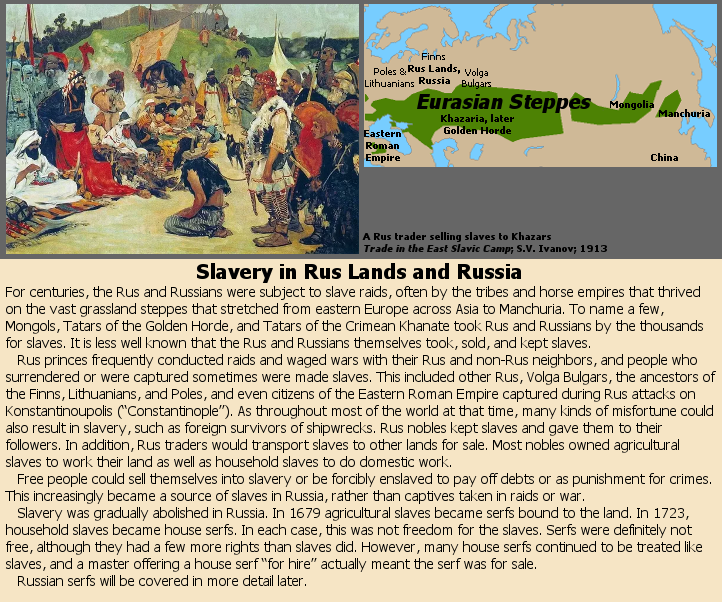

Slavery in Rus Lands and Russia
For centuries, the Rus and Russians were subject to slave raids, often by the tribes and horse empires that thrived on the vast grassland steppes that stretched from eastern Europe across Asia to Manchuria. To name a few, Mongols, Tatars of the Golden Horde, and Tatars of the Crimean Khanate took Rus and Russians by the thousands for slaves. It is less well known that the Rus and Russians themselves took, sold, and kept slaves.
Rus princes frequently conducted raids and waged wars with their Rus and non-Rus neighbors, and people who surrendered or were captured sometimes were made slaves. This included other Rus, Volga Bulgars, the ancestors of the Finns, Lithuanians, and Poles, and even citizens of the Eastern Roman Empire captured during Rus attacks on Konstantinoupolis ("Constantinople"). As throughout most of the world at that time, many kinds of misfortune could also result in slavery, such as foreign survivors of shipwrecks. Rus nobles kept slaves and gave them to their followers. In addition, Rus traders would transport slaves to other lands for sale. Most nobles owned agricultural slaves to work their land as well as household slaves to do domestic work.
Free people could sell themselves into slavery or be forcibly enslaved to pay off debts or as punishment for crimes. This increasingly became a source of slaves in Russia, rather than captives taken in raids or war.
Slavery was gradually abolished in Russia. In 1679 agricultural slaves became serfs bound to the land. In 1723, household slaves became house serfs. In each case, this was not freedom for the slaves. Serfs were definitely not free, although they had a few more rights than slaves did. However, many house serfs continued to be treated like slaves, and a master offering a house serf "for hire" actually meant the serf was for sale. Russian serfs will be covered in more detail later.